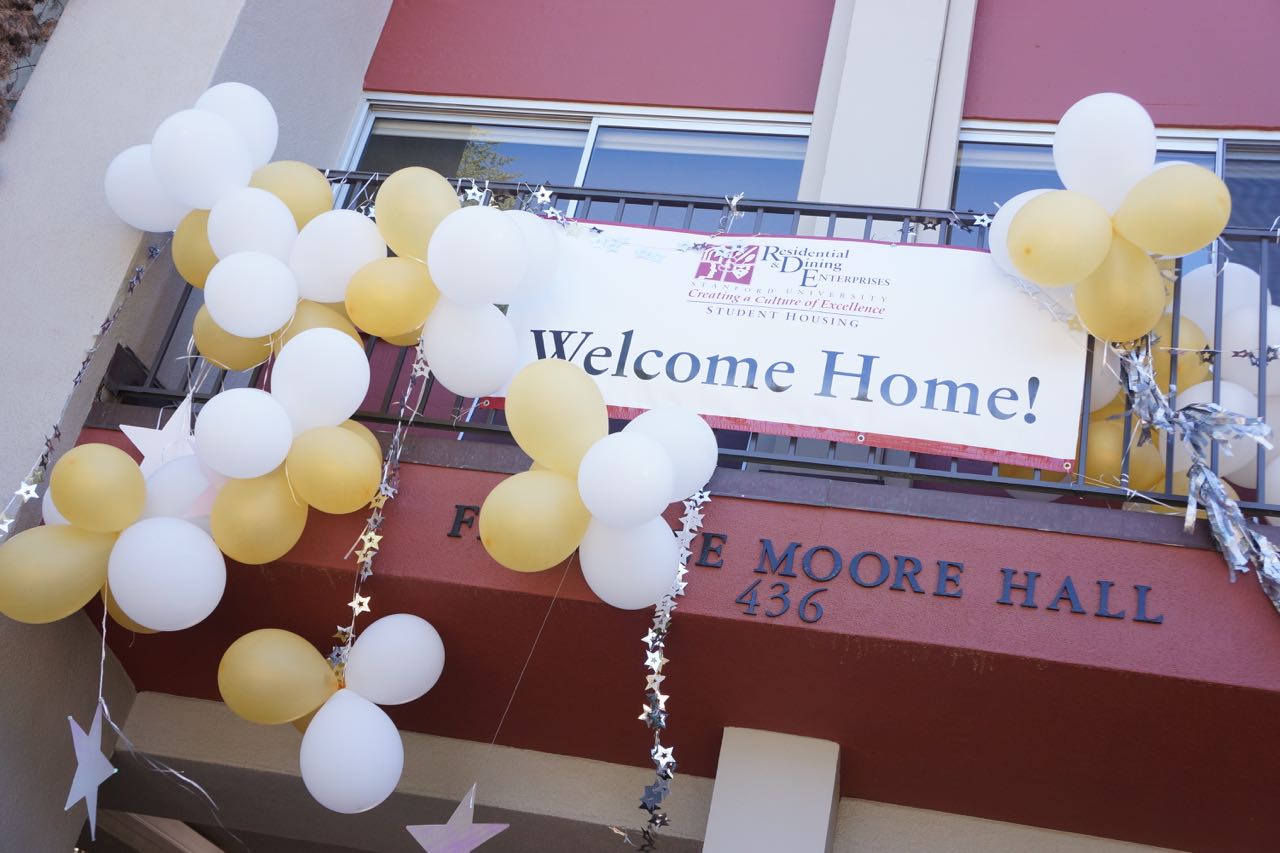The University will adopt the neighborhood model and completely redesign undergraduate residential life starting in fall 2021, the University announced on Thursday morning.
President Marc Tessier-Lavigne and Provost Persis Drell laid out plans for adoption of the ResX taskforce initiative — initially announced in 2018 — in their Thursday email to the campus community.
Starting next year, neighborhoods will divide the campus into eight to 10 clusters of varying residence types, with housing like Row houses and Mirrielees divided among the different neighborhoods. Incoming frosh will be assigned to a neighborhood designed to last all four years at Stanford, and returning upperclassmen will be allowed to request neighborhood assignment with a group of friends.
Though no official launch date was previously associated with the initiative, COVID-19 has expedited the process, according to Vice Provost for Student Affairs Susie Brubaker-Cole.
“ResX represents a tangible commitment to putting human relationships at the center of the undergraduate educational mission, and so this is a perfect time to implement it,” Vice Provost for Undergraduate Education Sarah Church told The Daily.
The new process will replace The Draw, and priority will be determined by class year instead of a selected tier. Students will be allowed to request housing in groups of up to eight once assigned to a neighborhood.
The neighborhood model will also offer all frosh the ability to live in all-frosh housing, although frosh will also be able to request to live in mixed-year theme houses, including ethnic theme housing. Additionally, as announced on Wednesday, the University will offer the Class of 2024 the option for all-sophomore housing during the 2021-22 academic year.
The initiative was designed in partnership with associate professor of psychology Jamil Zaki, whose research showed that students in all-frosh dorms have more interconnected social networks and report greater well-being than students in other residential environments.
Next year, in order to incorporate different residence styles into each neighborhood, the neighborhoods will have “geographic coherence” but “won’t be completely geographically contiguous,” according to Brubaker-Cole.
New student residences will be built in the future to better complement the neighborhood system, though dates for construction have not yet been set. The University will not be constructing new residences to implement the neighborhood plan in fall 2021.
Students will have the option to leave their neighborhood and “go abroad” for a year and live in another area on campus, according to Brubaker-Cole. Specialty housing such as Greek houses, ethnic-themed houses and co-ops will all be incorporated into the new neighborhood system as University Themed Houses in which any student can live.
In addition to neighborhoods, the Class of 2025 will also take part in the new first-year core focusing on Civil, Liberal and Global Education (COLLEGE) that will replace Thinking Matters courses. All first-years will take one quarter of COLLEGE, and in 2022, all frosh will take two quarters of COLLEGE. Stanford will also be moving forward with its Town Center project, which will re-imagine White Plaza as “a place that facilitates intellectual vitality, social engagement and community-building.”
The President and Provost wrote that the ResX Task Force met with more than 500 students, alumni, faculty and staff for input.
“My hope is that at this point when things are unveiled, that it’s very clear that there has been transparency and that there have been students from all different backgrounds providing feedback,” said ResX Alumni Advisory Board member and former student body vice president Isaiah Drummond B.S. ’20 M.S. ’21.
Neel Guha B.S. ’18 J.D. ’23, who has been involved in the planning process since his senior year, praised the University for its willingness to listen to student input.
“They reached out to every student community or group conceivable,” Guha said. “It was really nice to see how not only was the task force receptive to things I raised in meetings but there is just a culture of, ‘We need to listen to everyone who has something to say.’”
Although the ResX neighborhood plan will be piloted this fall, the initiative will unfold over a 25-year timeline.
“What’s happened in the last year is COVID has pulled us apart, and so at this time, we need a deliberate plan to bring us back together so we can recreate our communities,” Church said.
Contact Emma Talley at emmat332 ‘at’ stanford.edu and Camryn Pak at cpak23 ‘at’ stanford.edu.
